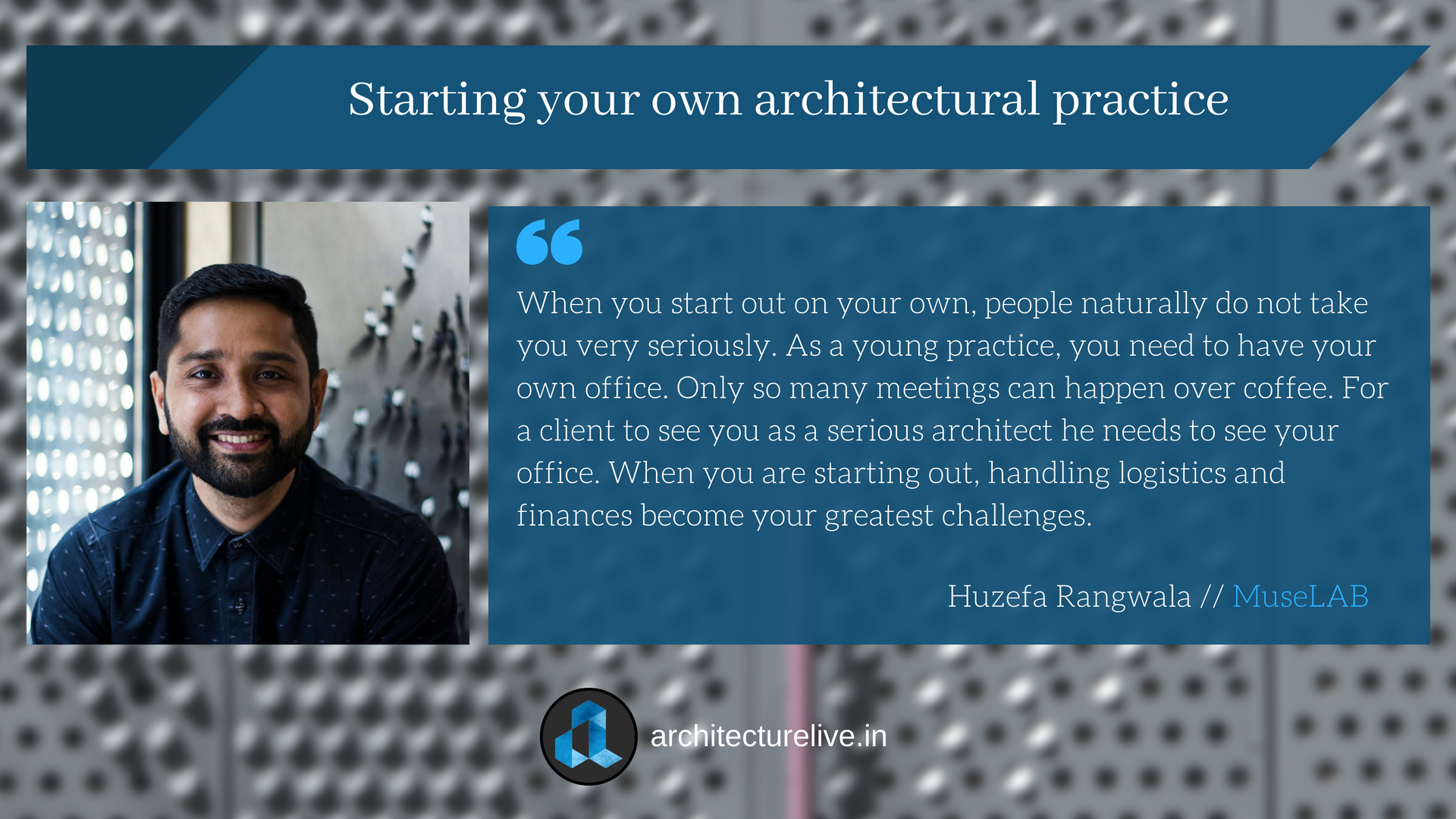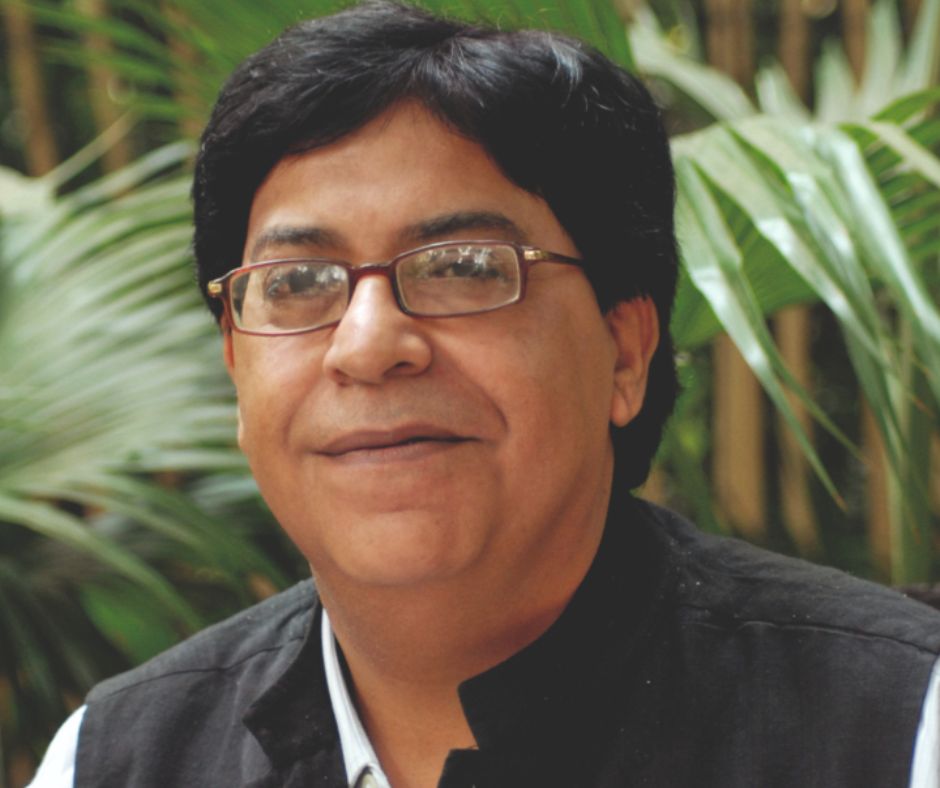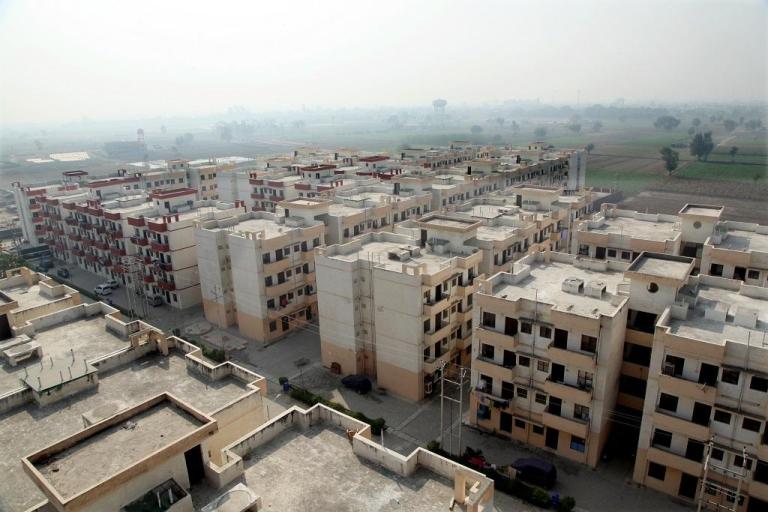MuseLAB, a Mumbai based architectural firm, a collaborative effort of two friends turned partners, was built on their similar wavelength on design sensibilities. Both, Huzefa Rangwala and Jasem Pirani had previously worked with renowned practices before starting their own firm in 2012. Although a relatively young firm, MuseLAB has made their mark due to their unique and client specific design solutions with intensive care for details irrespective of the project’s scale.
Initially there was a lot of struggle to reach our endeavors. We did some thirty odd projects, mostly on request for proposals and did not get reimbursed for any of them. We weren’t in a position to hire our first intern until one and a half year into coming together as a practice. It was a difficult time, after working for a decade, starting from scratch was a large gamble on our end.
In conversation today, we have Huzefa Rangwala, Director and Co-Founder of MuseLAB to give us insight on the opportunities and obstacles that come along with starting your own firm. His response is following;
“Architecture unfortunately, doesn’t teach us the art of business; it only teaches us the art of design.”
Although Huzefa Rangwala ventured into starting MuseLAB, almost ten years after he graduated, he has no regrets about the same as he found a confidante in Jasem, who shares his views and ideals on design, to be his partner in this journey.

Despite the duo having ten years of experience with several renowned practices and having dealt with projects of various scales – macro and micro; starting their own firm came with its own set of challenges. One of the biggest challenge lied in the first step itself, – when to take the leap of faith and start your own practice.
According to Huzefa, “It’s a catch – 22 situation. If you start immediately after graduating, you will learn on the ground. You will make mistakes but you will also learn from them and you will develop your own style. that is the biggest advantage of starting early. You have lesser things at stake, lesser responsibilities, it allows you to falter and fail initially, in an attempt to grow as an Architect. At the same time, starting after getting sufficient experience of working with an organization, especially a large one helps to understand how larger firms operate, you get the exposure to learn and absorb whatever you need to, be it in the aspect of design strategies or business advancements.
Starting your own firm is not just about designing, it’s about the business of architecture. It involves handling logistics, finances, vendors and clients. Working with a larger organization helps you understand that, but at the same time, I have peers who started their own practice right after graduating, and where they are now after twelve years, I might take another six years to reach there.
When you work for someone else, although it adds to your experience, you do end up losing time and energy that could have been absorbed into your practice”
The remark undeniably raises a juxtaposition of thoughts.
He continues, “When you start your practice is very subjective, it depends on your confidence in your design, the resources at hand and other factors that have to be taken into consideration. It’s about when you are ready to take that leap of faith”
What is notable here, is that the dilemma of ‘when’ isn’t even the primary impediment to cross. A lot of factors come into play when you enter into the field as an entrepreneur.
“When you start out on your own, people naturally do not take you very seriously. As a young practice, you need to have your own office. Only so many meetings can happen over coffee. For a client to see you as a serious architect he needs to see your office. When you are starting out, handling logistics and finances become your greatest challenges.”
Discussions like these makes one deliberate about the way we look at architecture. We have often been taught how to speak glowingly about our concepts, about our design strategies but not enough stress is put on the project management aspect of Architecture. Architecture may be an art, but its also a business; making a knowledge of entrepreneurial skills and having some understanding of business management a necessity. To further strengthen his point, he continues;
“You need to be relatively established and financially sound to appoint staff. Initially there was a lot of struggle to reach our endeavors. After having worked as a practicing architect for a decade, to start afresh as a architecture practice; came as quite a challenge.”
As daunting as this sounds, Huzefa wasn’t discouraged. He stands by his decision.” When you work under someone, unfortunately you do end up borrowing their idea of aesthetics and it can sometimes work against you. Working alone allows you to work on your own ideologies, principle and aesthetics which really help you grow and develop as an architect.”
As it so happens with students, that during certain periods where we are stuck with a design, it is but natural to reach out to his/her peers or seniors for constructive criticism or help. One can only hope of having a similar support when they are starting out initially. On this Huzefa paints a gloomy prospect, “Unfortunately in our profession, a candid discussion be it a dilemma with a project prospect or a client or design strategy, runs at a risk of a competitor trying to oust you.”
But counterintuitively, he suggests that, “Although that maybe the case, there are always a few peers and seniors with whom we can discuss and arrive at solutions when we are stuck in a conundrum.”
Being a first-generation architect means understanding the business of architecture does not come easy, and there aren’t enough resources to cushion initial failures, so a lot of time goes in understanding how to deal with logistics and networking and gaining referrals for obtaining new projects and clients.
“Although Referrals of clients or repeat projects by the same clients are the most prominent ways of getting a commission or a new project, Social media and media publications have interestingly, played a role in the new age entrepreneurship”
To further strengthen his point, Huzefa suggests;
“I believe social media is the outlet of our time. It allows us to display and curate what our designs are or what we stand for or what our design principles are and meet like minded people who not only like our work, but later come across as our client. We have got a lot of interesting projects like this. We take public relations seriously, and we are very aggressive with social media, especially Instagram. Internet can be a boon; If used appropriately. It also helps us enhance our network, although our network lies in Bombay, through media publications or social media we find ourselves meeting new clients from all over the country.”
This does makes one wonder about the tool of the millennials; a lot can be used today to expand and network if upcoming platforms for the same are used appropriately.
With this, the dialogue with Huzefa comes to a cohesive end, but not before he imparts guidance for budding architects and fresh graduates who aspire to start their own practice one day –
“I believe we, as architects graduate with a big fat ego. Not enough stress is provided on collaborative ideas of great minds to arrive at something greater. In a process of growing as an architect, never forget the integrity of architecture – to serve a greater good. Always investigate and find new ways to arrive at what you want. Always keep investigating and interrogating.”
Now, that’s a great food for thought for all architects and students.






